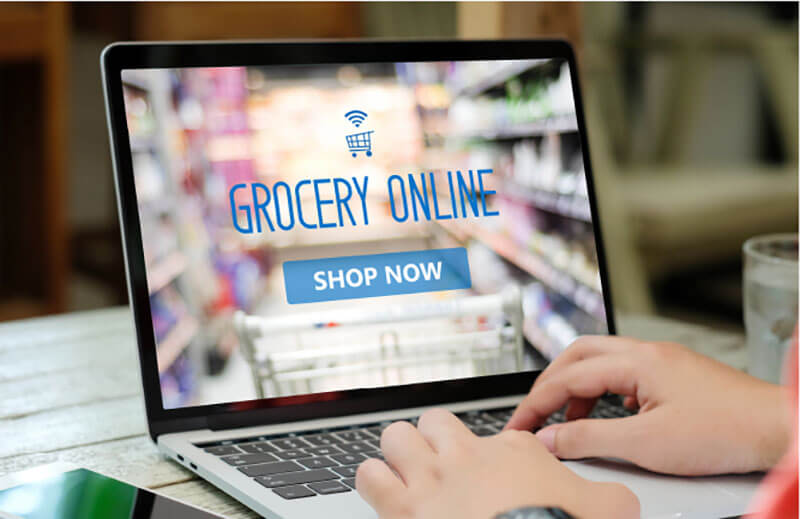U.S. online grocery sales for July jumped 17 percent year-over-year to $7.8 billion, driven by inflationary pressures and a strong demand for delivery and pickup services triggered by ongoing COVID-19 concerns, according to a Brick Meets Click/Mercatus Grocery Shopping Survey fielded July 29-30.
During July, more than 68 million households went online to buy groceries, a 3 percent gain versus last year, but only the pickup and delivery segments benefited from that increased demand. Pickup’s monthly active user base expanded more than 5 percent and delivery’s expanded nearly 4 percent during the month, while ship-to-home’s MAU base contracted more than 4 percent.
“COVID-19 concerns coupled with inflation have forced a trade-off between two fundamental desires for shoppers – not getting infected and not paying more than necessary,” said David Bishop, partner at Brick Meets Click.
“While online shopping – especially delivery – costs more than in-store shopping, using an online service may help prevent illness which could cost more in the long term due to lost wages and other life complications.”
The research found that only one-fifth of households were “not at all concerned” about catching COVID-19, and 36 percent of those households indicated using a grocery pickup and/or delivery service during the past month.
It’s worth noting that during July, 41 percent of all U.S. households used a grocery pickup and/or delivery service, suggesting that 5 percentage points, or more than 10 percent of MAUs, were influenced by COVID-19 concerns to some degree if compared against usage rates for those with no concern.
The crosswinds caused by inflation and COVID-19 also likely help to explain shifts in where households are shopping online for groceries. Compared to July of last year, mass – which appeals to more cost-conscious shoppers – experienced an increase of just more than 1 percent in the number of MAUs while grocery’s MAU base contracted over 10 percent.
The likelihood that an online grocery shopper will use the same service again within the next month remained stable, strengthening by nearly one point versus last month and finishing at 64 percent for July. That month-over-month gain was attributed to stronger repeat intent scores from mass (68 percent) as the gap versus grocery (at 58 percent) widened, landing at more than 10 percentage points for the month.
“Online customers are highly motivated by convenience, and pickup offers customers a higher degree of convenience and control at a lower cost than Delivery,” said Sylvain Perrier, president and CEO at Mercatus. “My advice to regional grocers is to use your store locations to your competitive advantage and promote pickup services to your delivery customers.”
The widening gap in repeat intent is especially concerning because cross-shopping between grocery and mass increased to 30 percent in July, 4 points higher than last year. This means that 3 in 10 customers who placed at least one online order with grocery during the past 30 days also placed an order with a mass retailer. These results should motivate grocery retailers to reassess elements of their value proposition as well as how well they are executing their respective strategies.
For information about access to the research and reports, visit brickmeetsclick.com.

